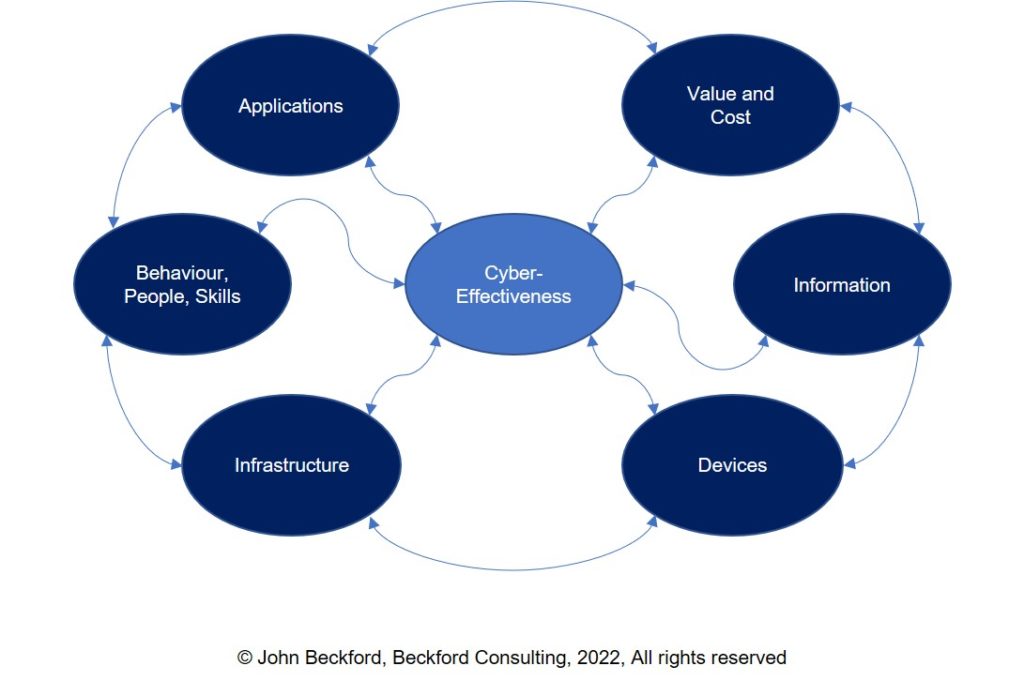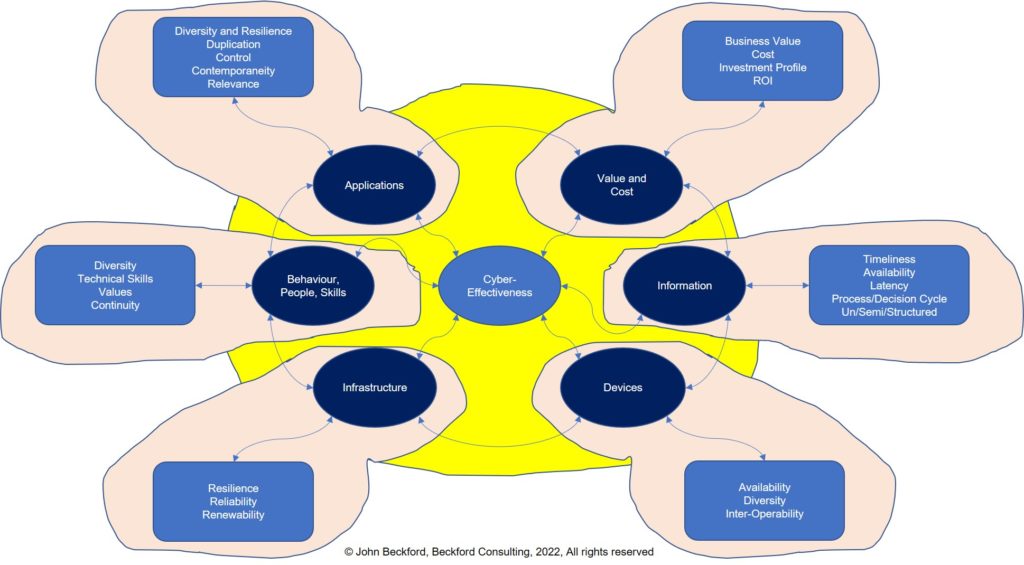An intelligent organisation is one which integrates and synthesises people and behaviours with process and structure in order to fulfil purpose – all of it evolving. It is enabled by information flowing through the organisations nervous system – the decisions, outputs, applications, devices and infrastructure of its information processing – including the distributed ability to distinguish signal from noise and generate information from data. To be cyber-effective the organisation through its human actors (at least in the current state of artificial intelligence) must comprehend and evaluate how well it captures, codifies, curates and compiles data into information. Critically it must comprehend how well it uses that information to manage itself and maintain its viability, co-evolving with its context or environment
A basic systemic model is set out in figure 1, identifying key sub-system elements and showing selected interactions. Each sub-system interacts with and has inter-dependency with every other one.

Figure 1: Information Architecture
Cyber-Effectiveness is a function of the interaction, somewhat arbitrarily, of six sub-systems which taken together constitute the whole:
- The infrastructure which underpins everything;
- The devices that ride on the infrastructure;
- The applications that ride on the devices and capture data;
- The information that is generated from the data on the devices;
- The behaviours, skills and people that depend upon and are depended upon for the operation of the system;
- The multiple dimensions of value, informational, societal, monetary, environmental, that are derived and the costs, informational, societal, monetary and environmental that are incurred.
Figure 2 shows that each sub-system, while contained in the overall environment (yellow blob) also contains its own subs-systems and is contained in an environment which is partly particular to itself, partly overlapping.

Figure 2: Information Architecture Sub-Systems
Each sub-system contains multiple elements (a few have been included in the diagram as examples), each of which, in interaction with the others, enables or impairs the effectiveness of the whole. To comprehend cyber-effectiveness, we must define, measure and evaluate the utility or contribution to viability of the whole information architecture of the organisation (whether real or virtual). A quantitative and qualitative evaluation scheme is being refined to provide exploitable insights to the cyber-effectiveness of any organisation. The insights derived will enable the diagnosis of informational ailments, prognoses about the emerging future and identification of therapeutic actions – treatments that will ameliorate or eradicate the disorders.
The cyber-effective intelligent organisation will understand the value of information and the costs of its provision and will use that understanding to manage itself and its sustainable evolution in the rapidly changing 4IR environment.